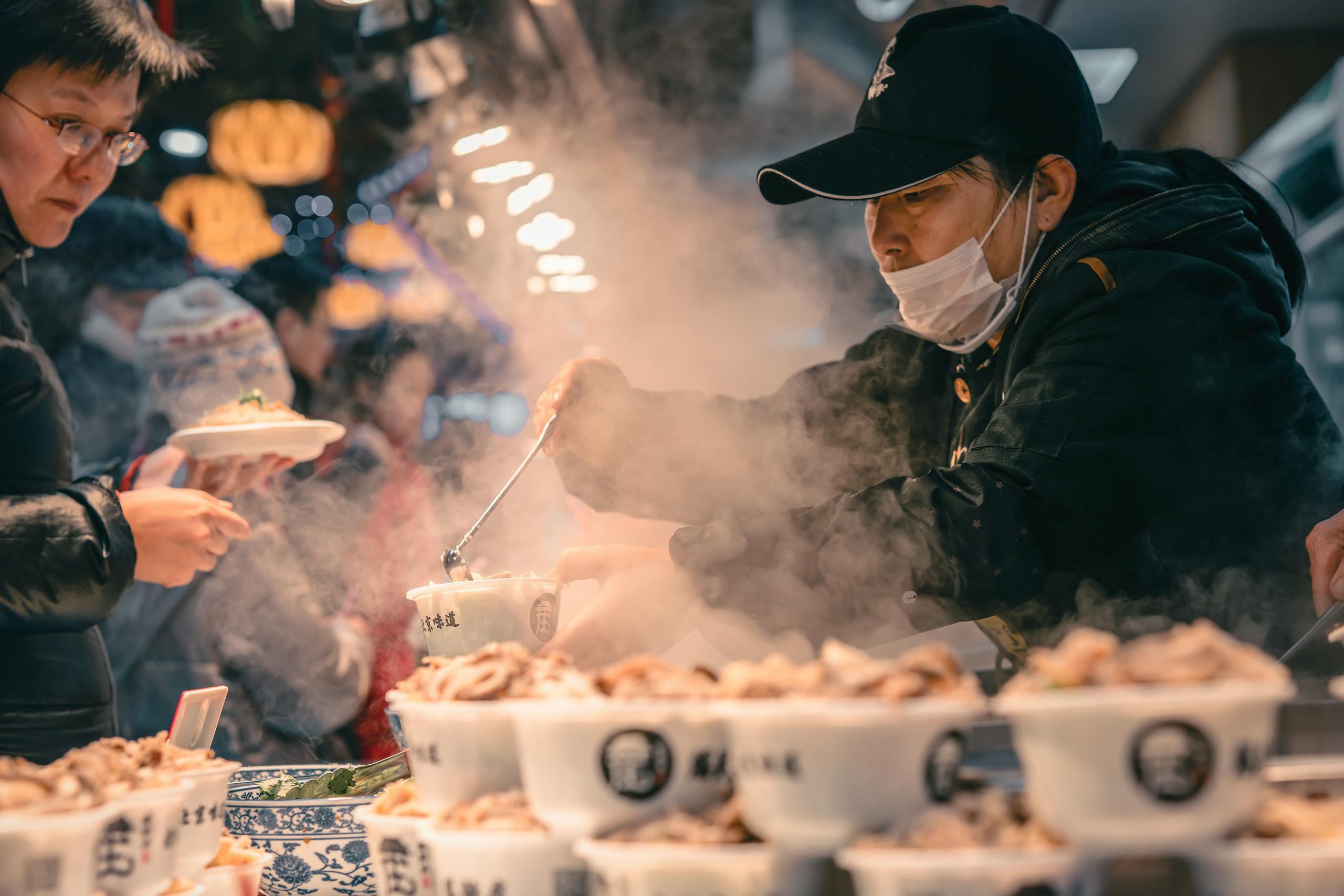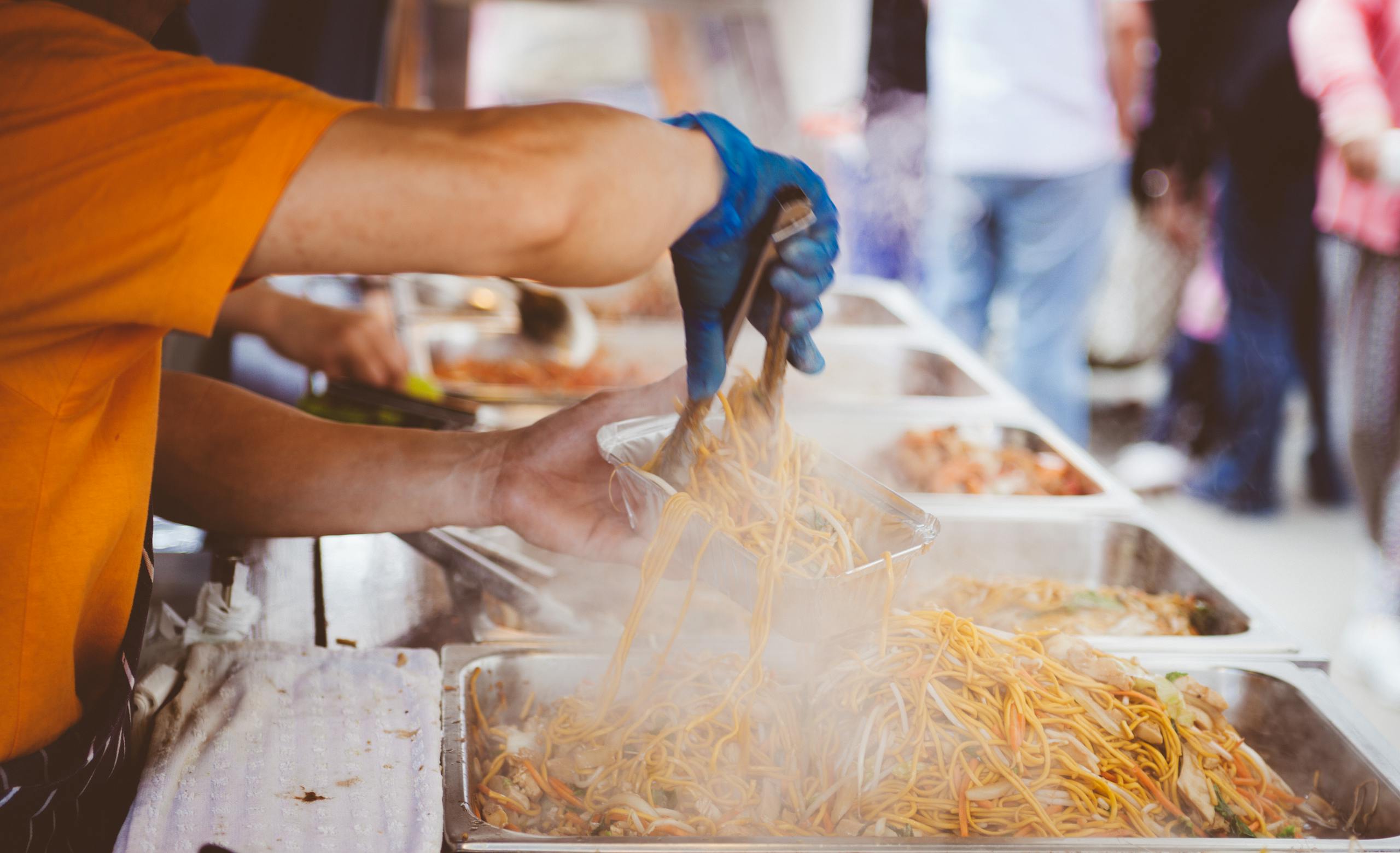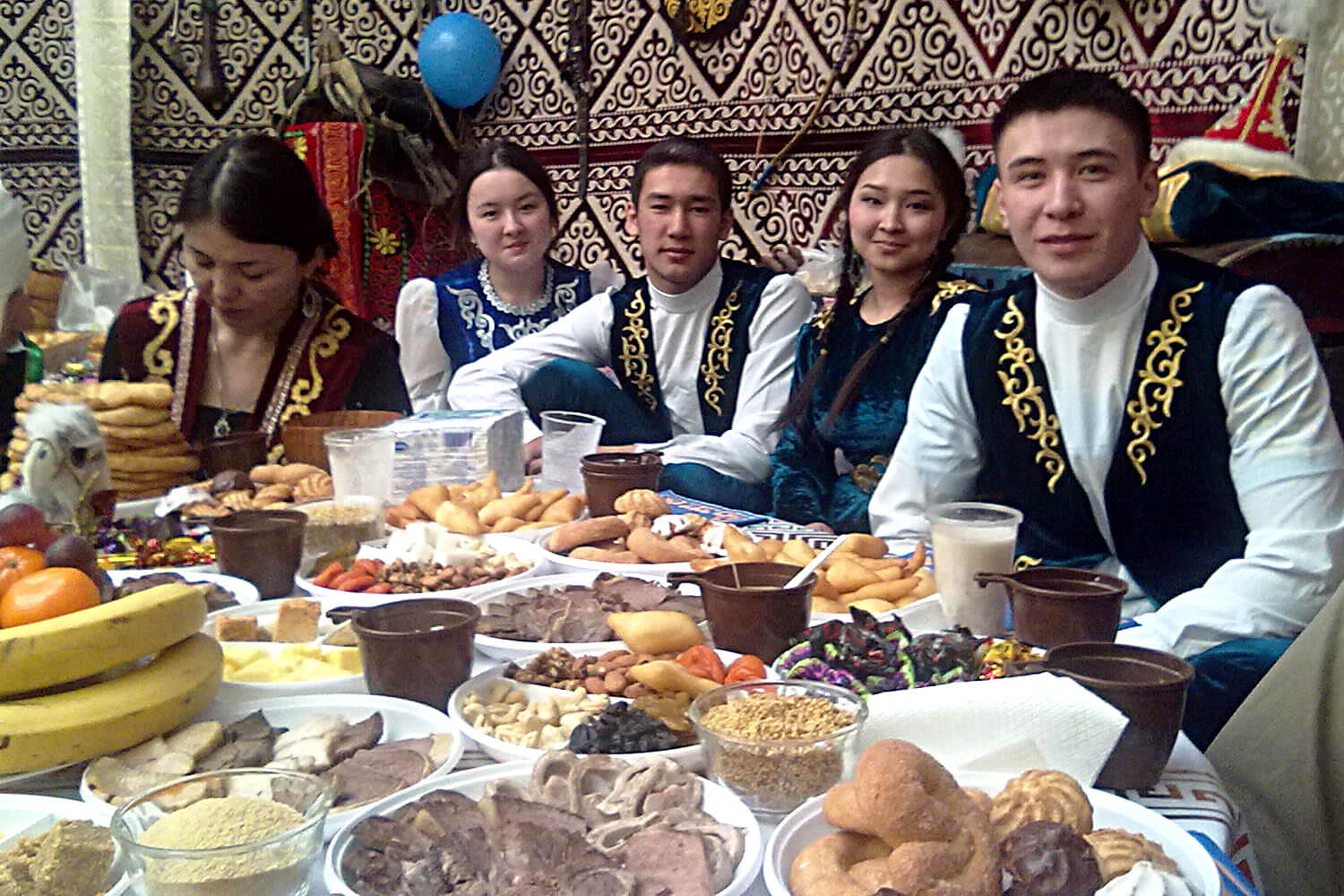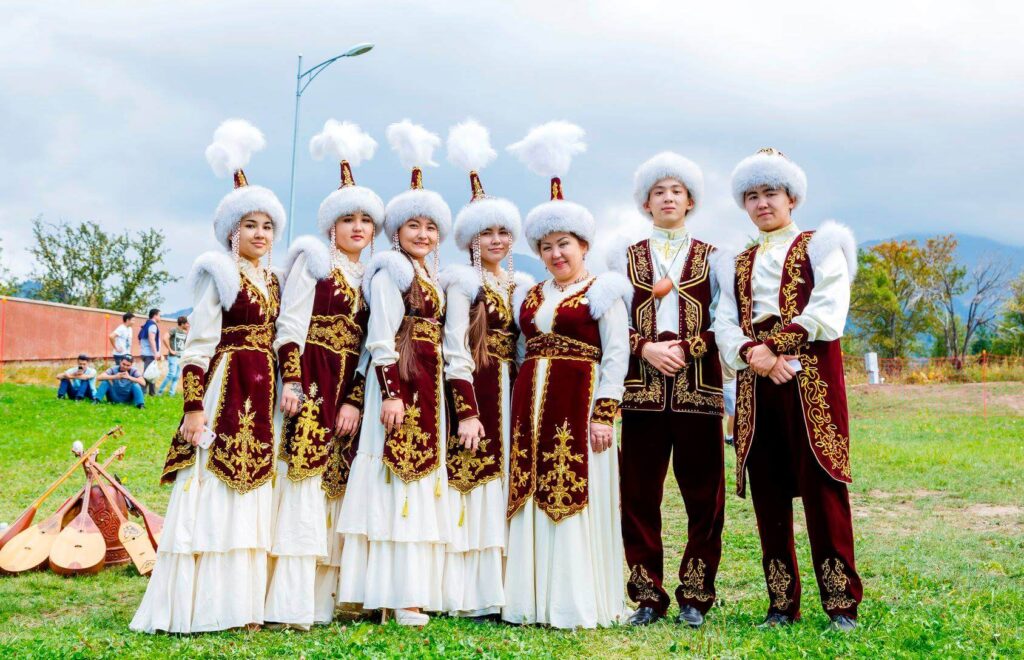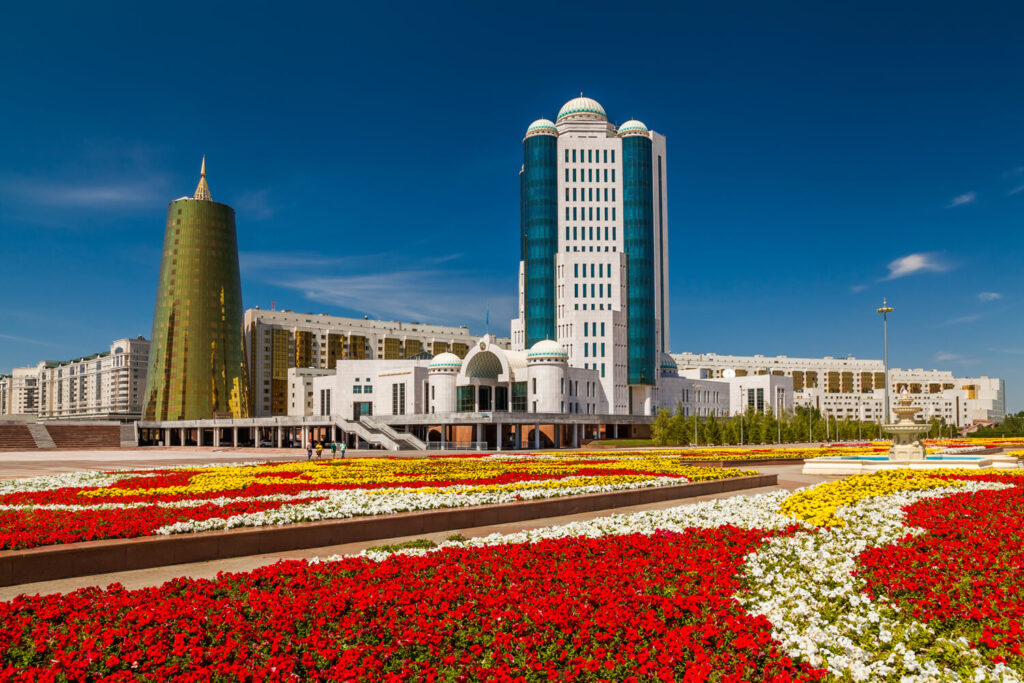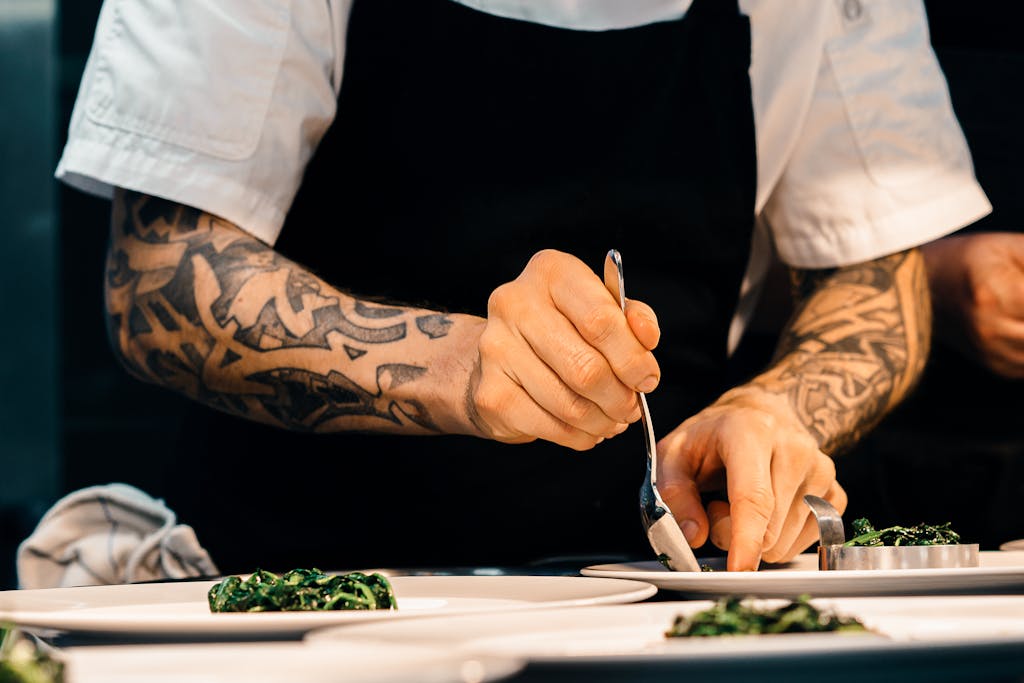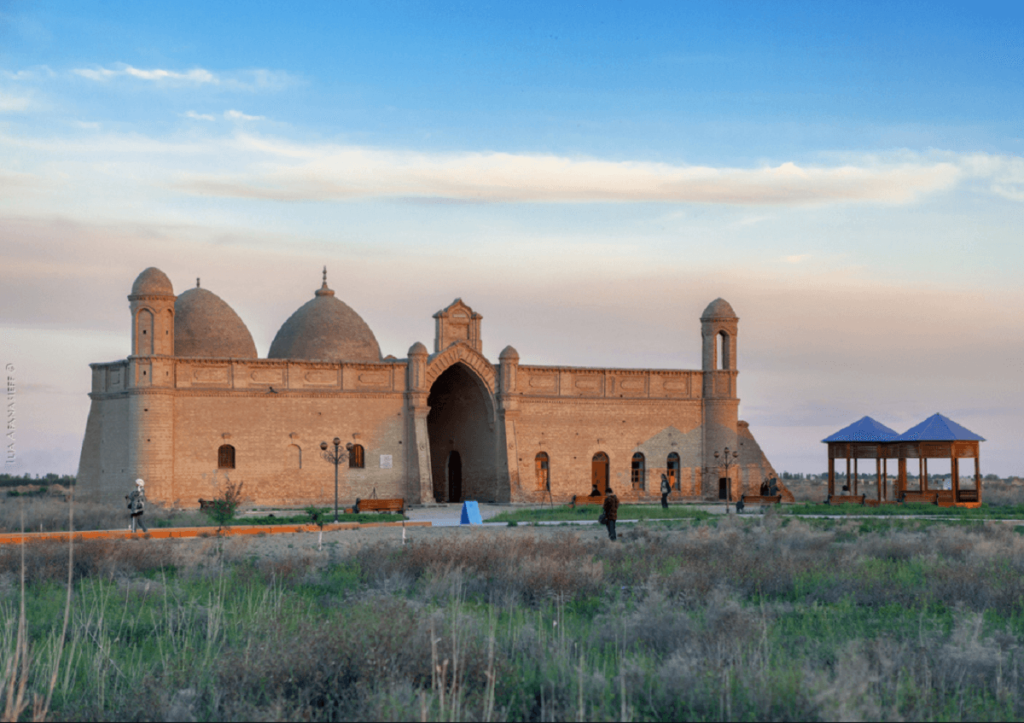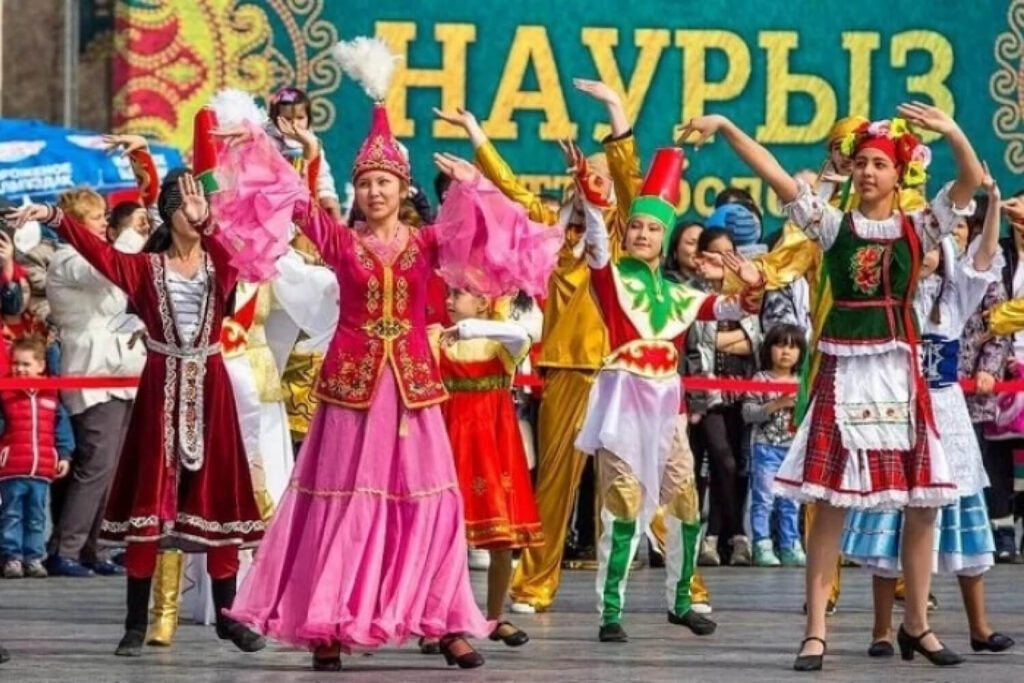Kazakhstan street food: Kazakhstan’s street food scene is a vibrant reflection of its rich culinary heritage, combining traditional flavors with the influences of various cultures.
Samsa
- Description: Samsa are savory pastries filled with meat (usually lamb or beef), onions, and spices, encased in a flaky dough.
- Cooking Method: They are often baked in a tandoor (a traditional clay oven) or regular ovens, giving them a crispy exterior.
- Cultural Significance: Samsa are a popular snack for locals and tourists alike, often enjoyed with tea. They symbolize hospitality and are commonly sold at street vendors and markets.
Beshbarmak
- Description: Although traditionally a main dish, you can find variations of beshbarmak served as street food, particularly during festivals.
- Ingredients: It consists of boiled meat (usually lamb or beef) served over flat noodles and topped with onions and broth.
- Cultural Significance: Beshbarmak means “five fingers,” referring to the traditional way of eating it by hand. It’s deeply rooted in Kazakh culture and often served during special occasions.
Add an overline text
Discover Kazakhstan
Cheburek
- Description: Cheburek are deep-fried pastries filled with minced meat (typically lamb or beef) and spices, often with a hint of onion.
- Texture and Flavor: The dough is thin and crispy, and the filling is juicy and flavorful.
- Cultural Significance: A popular street food item, cheburek is often enjoyed with a side of yogurt or a dipping sauce, embodying a fusion of Turkic and Russian influences.
Lepeshka
- Description: Lepeshka is traditional flatbread, often baked in a tandoor, resulting in a crispy crust and soft interior.
- Cultural Significance: This bread is a staple in Kazakh cuisine, commonly served with meals or as a snack. It symbolizes warmth and hospitality when offered to guests.
Baursak
- Description: Baursak are small, deep-fried dough balls that are light and fluffy, often slightly sweet.
- Cultural Significance: Traditionally served at celebrations and family gatherings, baursak can also be found at street stalls, offering a delightful snack or dessert option.
Plov
- Description: While often prepared as a main dish, you can find street vendors selling individual servings of plov, a fragrant rice dish.
- Ingredients: Made with rice, meat (commonly lamb), carrots, and various spices, plov is hearty and flavorful.
- Cultural Significance: It is a staple of Central Asian cuisine and often served at gatherings, making it a beloved street food choice.
Kazy
- Description: Kazy is a traditional sausage made from horse meat, seasoned and stuffed into casings.
- Cultural Significance: It’s considered a delicacy in Kazakhstan and is often served at special events, symbolizing Kazakh heritage and the importance of horses in nomadic culture.
Add an overline text
Discover Kazakhstan
Manti
- Description: These are steamed dumplings filled with minced meat (usually lamb or beef) and onions, similar to Chinese dumplings or Central Asian manty.
- Cultural Significance: Manti are a common dish in Kazakh homes and can often be found at street stalls, showcasing the influence of Turkic cuisine.
Kumis and Shubat
- Kumis: A fermented drink made from mare’s milk, kumis has a slightly sour taste and is often enjoyed as a refreshing beverage.
- Shubat: Made from fermented camel milk, shubat is less common but can be found in certain regions.
- Cultural Significance: Both drinks reflect the nomadic heritage of Kazakhstan and are integral to the traditional diet.
Fruits and Sweets
- Description: In markets and street stalls, you’ll find a variety of fresh fruits, particularly during the summer months, such as melons, apples, and berries.
- Sweets: Traditional sweets like chak-chak (fried dough drizzled with honey) are also popular as snacks or desserts.
- Cultural Significance: Fruits and sweets are often enjoyed during social gatherings and celebrations, adding a sweet touch to Kazakh hospitality.
Conclusion
Kazakhstan’s street food is a delicious and accessible way to experience the country’s culinary culture. From savory pastries to traditional dishes and refreshing drinks, these foods reflect the country’s nomadic roots and diverse influences. Whether you’re wandering through bustling markets or enjoying a festival, the street food of Kazakhstan offers a delightful taste of its rich heritage and communal spirit.




